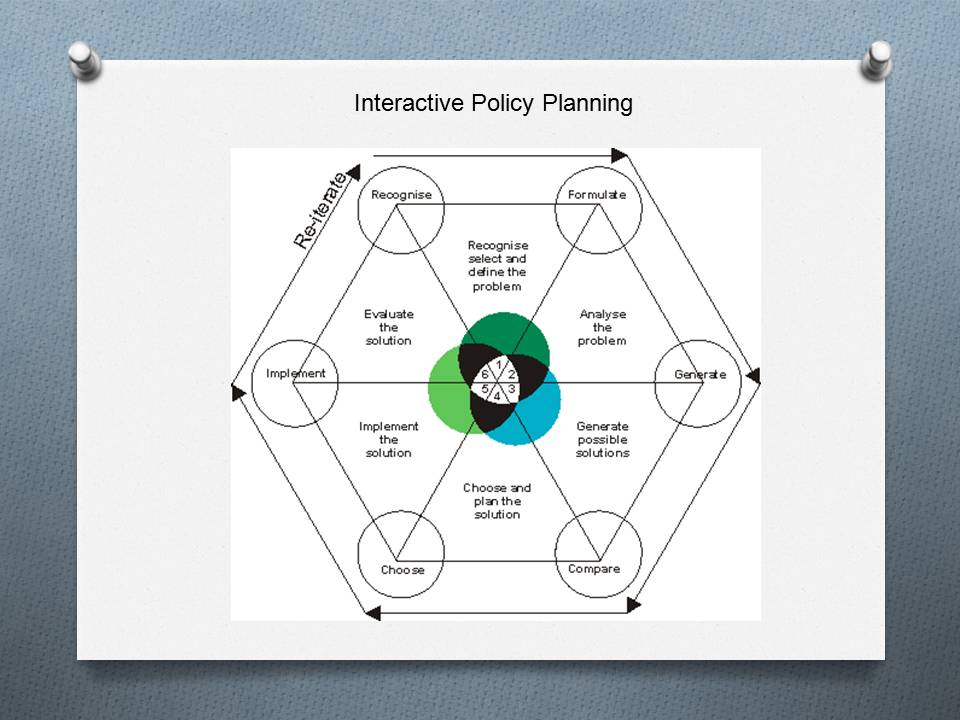Interactive environmmental policy planning
Our interactive workshops facilitate policy making with maximum consensus and support from all stakeholders. The workshops have a high problem solving capacity because all participants have an equal contribution and a level playing field is instrumental in producing the results of the workshops.
The workshops follow a cyclic pattern, which touch upon all levels of policy formulation:
- Normative
- Strategical
- Tactical
- Operational
Each cycle consists of six phases:
- Recognition (identification and prioritization of problems)
- Problem analysis (formulating, structuring and understanding the problems)
- Policy forming (generating alternatives, determine feasibility, rejecting alternatives)
- Policy planning (setting preferences, formulation of policy programs)
- Problem solving (making choices, operational action plans)
- Policy Management (how to monitor and adjust)
 Depending on the complexity of the problems, each phase can require a number of workshops, or one workshop may cover several phases. The results of a certain phase may lead to the re-run of a previous phase.
Depending on the complexity of the problems, each phase can require a number of workshops, or one workshop may cover several phases. The results of a certain phase may lead to the re-run of a previous phase.
During the workshops insights in each others problems are gained. Arguments, procedures, priorities and creativity are discussed to reach consensus. The participants gradually develop a shared framework of concepts and thinking, and possibly even a shared idiom. Because all participants equally contribute to the process, a communal result arises.
A playful and somewhat alienating location for the workshops contributes favorably to the working atmosphere and improves the interaction between the participants. These workshops are best labelled as "guided brainstorming". Various creativity tools are used to facilitate this process and management techniques such as SWOT, AIDA, SMART, etc. are used to precisely formulate and evaluate the results.
Uncertainties and risks are an integral part of the policy making process. Data, priorities and decisions are subject to uncertainty, but these uncertainties and risks are made explicit and transparent.

